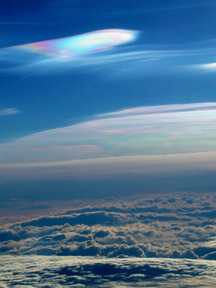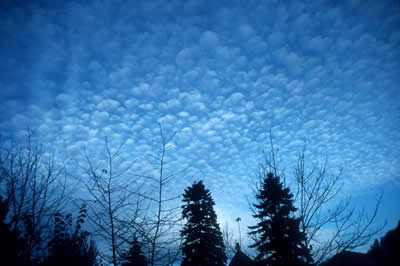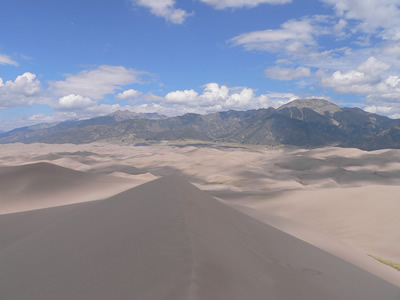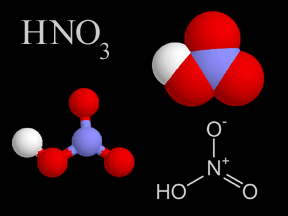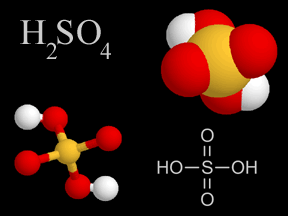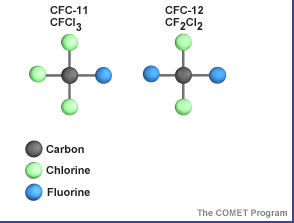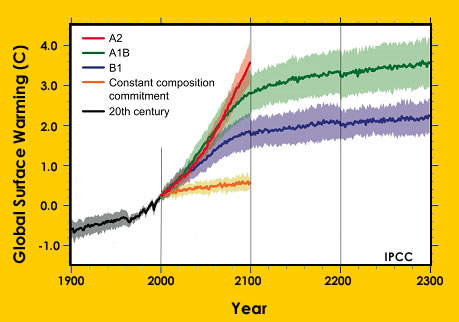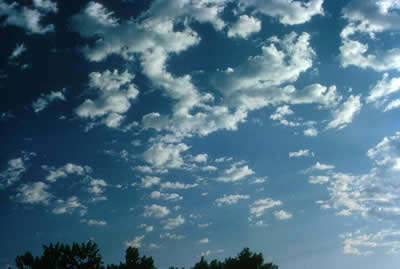Click on image for full size
Image courtesy of NASA (Paul Newman, GSFC).
Polar Stratospheric Clouds
The stratosphere layer of Earth's atmosphere is very dry and nearly cloud-free. There is just one type of cloud found in the stratosphere - Polar Stratospheric Clouds (PSCs). Also called nacreous clouds, PSCs form in very cold temperatures at high altitudes over the polar regions in winter.
PSCs form in the stratosphere at altitudes between 15 and 25 km (about 50,000 to 80,000 feet), far above even the relatively high-flying cirrus clouds in the troposphere below. The temperature must be around -78° C (-108° F) for PSCs to form, so these clouds only occur in the chilly lower stratosphere... in winter... near the North and South Poles!
Clouds of many types are common in the moist troposphere, the lowest layer of Earth's atmosphere. Those clouds are made of frozen crystals or small droplets of water. By contrast, the stratosphere (which is directly above the troposphere) is very dry; clouds are rare there. There are two distinct types of Polar Stratospheric Clouds: Type I clouds are composed of nitric acid and water (and sometimes also sulfuric acid), while Type II clouds contain only water ice.
Because of their high altitudes, PSCs are often illuminated by sunlight long after sunset or well before sunrise, when other clouds are dark and shadowed. The droplets and crystals in PSCs diffract sunlight into rainbow hues, so these clouds are often seen as brightly-colored wisps during morning or evening twilight.
PSCs have a darker side, however. The clouds strongly promote various chemical reactions that destroy ozone in the stratosphere. PSCs play a major role in depleting the ozone layer, Earth's ultraviolet-blocking "sunscreen". An increase in occurrence of PSCs could also be an indicator of global warming. Warming of the troposphere (down low, where we live) is expected to be accompanied by cooling of the stratosphere. Colder conditions in the stratosphere could mean that the ultra-frigid temperatures needed for PSC formation may occur more often.


